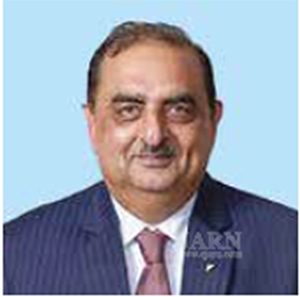
Kanwal Jeet Jawa
CEO,& MD, Daikin India
Daikin has expanded rapidly over the past decade in India, overtaking the more established competitors, with the help of local production, robust distribution, local research and development (R&D), and the Air Conditioning Technology Development Centre (ACDC) for skill development. By the end of 2020, it plans to expand its sales and distribution networks to more than 10,000 locations across the sub-continent.
In India, air conditioner penetration is still hovering at 6 to 7%, as compared to 95% in developed countries. So, there is huge potential for growth. Moreover, many Japanese companies are waiting to move their manufacturing bases to India, subject to economic and administrative incentives offered by the Indian government.
Kanwal Jeet Jawa, chief executive officer (CEO) and managing director of Daikin India, and member of the board of Daikin in Japan, and newly-elected president of the Refrigeration and Air-conditioning Manufacturers’ Association (RAMA), said, “My charter is to take advantage of India’s manufacturing potential, which is ready for explosive growth, and create a level playing policy and operational framework for the heating, ventilation, and air conditioning (HVAC) industry.”
“India has created a track record for being a sustainable manufacturing destination. Daikin has been manufacturing in India since 2009, and today we are exporting India-made products to South America, East Africa, Sri Lanka, Bangladesh, and Nepal. Considering that China produces more than 100 million air conditioners per year, the Indian market with a capacity for 6.5 million units has a great potential if a comprehensive plan can be implemented to support local manufacturing,” he said. “Today, the air conditioner industry is at the cusp of transformation, which can immediately make India the most preferred manufacturing destination, second only to China, and stamp our dominance for a long time,” he added. “Products made in India are reliable and cost competitive, and can be made available in developing countries with similar weather patterns. We expect India to play a major role as a manufacturing destination and fill the gap that China will create,” he said.

